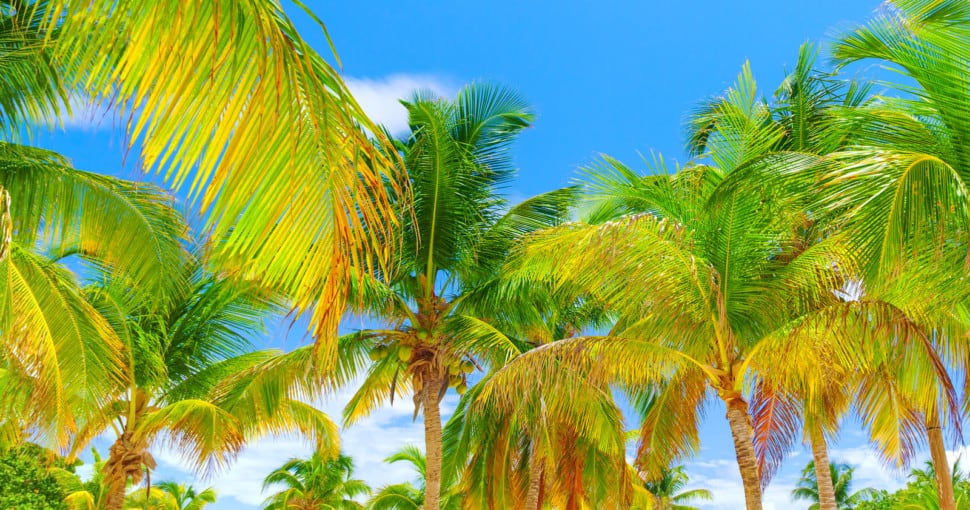Palm trees are a fascinating sort of tree that most people believe are only suitable for warm climates. Some species, however, may survive and thrive in temperatures as low as 10 degrees Fahrenheit. That said, there are a few Palm tree twins out there that even adopt the name “Palm.” So, in light of that, what trees are similar to palm trees?
Contents
A family of plants known as the Arecaceae includes Palm trees. That said, trees that look similar to palm trees but are not from the Arecaceae species are the Sago palm, Madagascar Palm, Ponytail Palm, Dracena Arborea, Traverlers Palm, and the Yucca Plant.
Even though most of these Palm-like trees have the name “Palm” in them, they are not considered part of the genuine Palm tree species. In light of that, let’s take a closer look at what these Palm tree doppelgangers are.
1. Sago Palm Tree
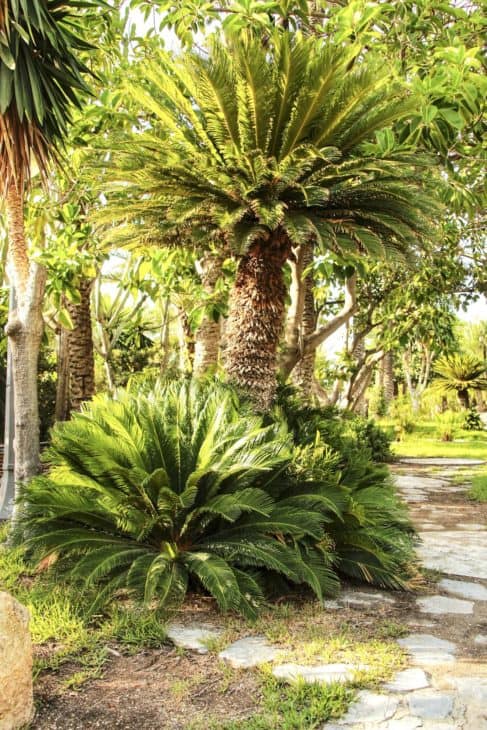
Despite their near resemblance, Sago Palms (Cycas revoluta) are not genuine Palms. Palms are blooming plants (angiosperms), whereas sagos are gymnosperms and are connected to conifers like pines and bald cypresses. It is particularly noticeable when looking at their reproductive mechanisms.
Sago palms are either males or females, and each species has its own reproduction system. Therefore, it makes sense that the male structure is shaped like a cone since they are related to cone-bearing conifers.
Female sago palms generate a big, dome-shaped cone that finally holds scarlet seeds. Dogs are particularly poisonous to these seeds. So if there are dogs around, collect the seeds and dispose of them.
Sago palms do not develop reproductive structures every year and will not produce any until they reach a certain age. Therefore, male and female sago palms grow and look the same, save for the form of the cone.
The Sago palm grows one to two inches per year and can reach a height of 20 feet, depending on the environment and growth habits in the area.
2. Madagascar Palms
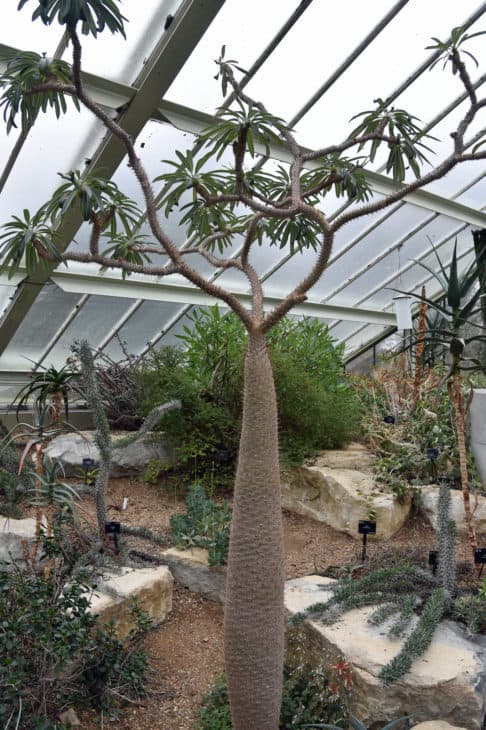
Madagascar palms (Pachypodium lamerei) are succulent and cactus plants native to southern Madagascar, and despite its name, it is not a palm tree.
Most people associate Madagascar Palms with the strange succulents (from Madagascar) with thick, strongly spiny trunks and a simple rosette of lancelote leaves at the top, not very palm-like if you ask me. Still, the basic form presents itself in a similar palm-like manner.
Madagascar palms are planted as exterior landscaping plants in warmer climates and as appealing houseplants in cooler climates. Madagascar palms are attractive plants that may reach heights of up to 4 – 6 feet inside and up to 15 feet outdoors.
The spines on the tall, spindly stem are unusually thick, and leaves grow at the top of the tree. Branches appear on this plant exceptionally seldom, if at all. In the winter, fragrant yellow, pink, or red blossoms bloom. Any sun-filled space will benefit from the addition of Madagascar palm plants.
Though they are beautiful, and I have many in my yard, they are not suitable for treating as palms since they will decay in front of your eyes if not treated correctly. In addition, unlike actual palms, they may also be decapitated to produce additional branches.
3. Ponytail Palm
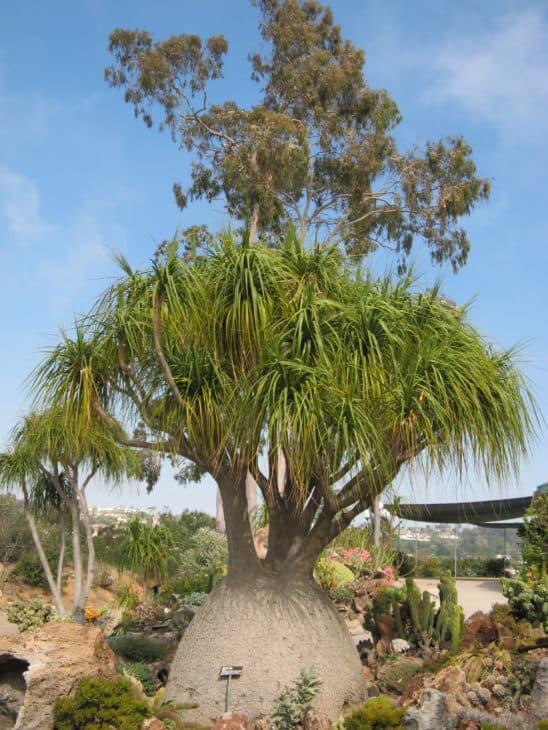
The ponytail “palm” (Beaucarnea recurvata) is a lovely South Florida plant, even if it isn’t a true palm. The long, delicate leaves drape over the branches, giving it a “ponytail” impression, giving this tree-sized succulent its name and is a member of the Agave family.
Ponytail palms are excellent specimen plants. It’s usually spotted on front lawns in South Florida because of its striking impact. In addition, Ponytail palm is native to Mexico’s arid areas, making it ideal for rock gardens or as a container houseplant in the state’s colder climates.
In most cases, the plant does not exceed 20 feet in height. A woody, light brown, comprehensive stem root called a caudex grows at the trunk’s base, spanning up to 7 feet across. Branches grow from one or more main stems immediately above the top of the caudex, but more typically several feet above the caudex.
Long and slender light green leaves cascade in tufts at the termination of the few branches. The elder bottom leaves dry out over time and finally fall away from the tuft.
In spring and summer, long, spectacular creamy-white inflorescence develop above the leaves on some or all of the branches. They last for several weeks and are initially upright until drooping with age or when laden with tiny capsules. Some plants bloom twice or even three times a year.
4. Dracaena Arborea
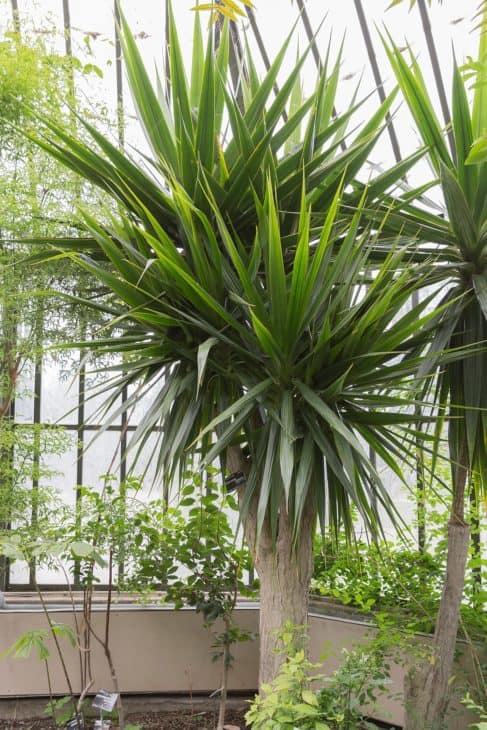
The Asparagaceae family includes Dracaena Arborea, a tiny perennial palm-like plant. Dracaena is a genus of about forty species, most of which are native to South Africa and the Canary Islands.
In a tropical climate, such as Florida, all species of Dracaena plants thrive naturally. The famous names for Dracaena Arborea include Dracaena Tree, African Dragon Tree, Dragon Tree, Cornstalk Plant, Ribbon Plant, and Corn Plant. Dracaena or Arborea are two common names for it.
Arborea means tree-like, while Dracaena signifies dragon. Place your Dragon Tree in an area with lots of room for it to develop. Dracaena may reach a height of 7′ – 8′ feet when kept in a container indoors.
These plants may reach a height of over 10′ – 15′ feet when grown outdoors. Arborea is a palm tree-like plant that looks great in the house or workplace.
5. Travelers Palm
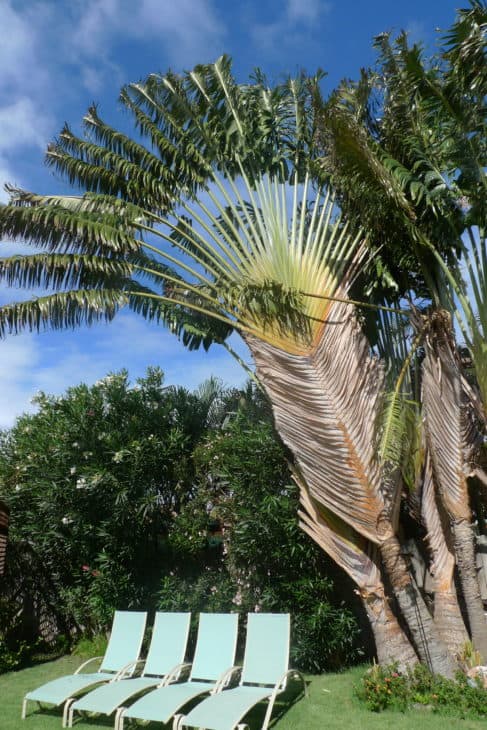
The traveler’s Palm (Ravenala madagascariensis) is the popular name for this interesting-looking tree. In truth, it is a close relative of the bird of paradise plants (Strelitziaceae) rather than a palm.
This species is the only one of its genus and is endemic to Madagascar. Its association with another Madagascan species, the lemurs, is even more remarkable. But first, let’s consider what’s in a name.
There are two likely explanations for the term “traveler’s palm.” The first has to do with the direction in which that massive fan of leaves is oriented. The tree’s photosynthetic fan is reportedly aligned in an east-west direction, which may be used as a primitive compass to help tired travelers find their way.
The water that gathers in the leaf bases of the traveler’s tree, also known as the Traveler’s Palm, has helped supply water in emergencies for long distant travelers back in the day. Huge leaves arise from long stems in a flat, fan-shaped arrangement, like a peacock’s tail, and the leaves grow to be immense.
Traveler’s Palm grows at a reasonable rate; the tree will attain a height of 30 feet and a spread of 18 feet. It grows too huge for most modest-sized yards, but it provides a beautiful tropical accent in a vast landscape.
6. Yucca Plant
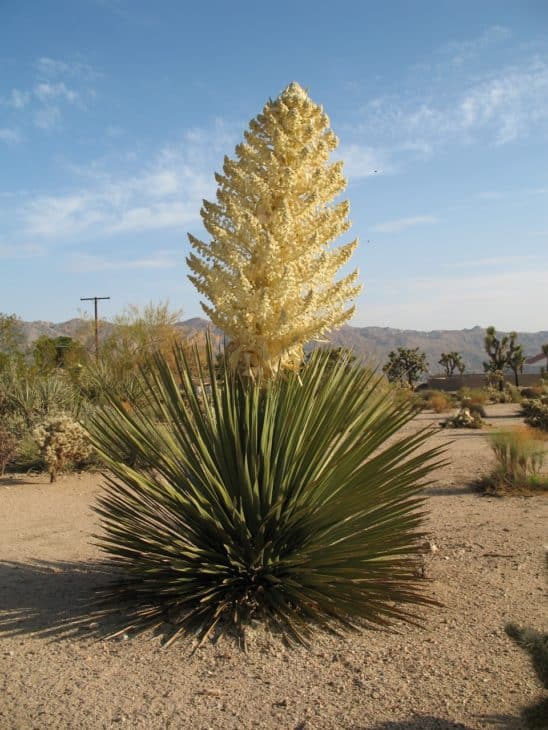
The giant palm lily is the scientific name for the yucca plant. As its name indicates, it is not a true palm tree but rather an asparagus plant (Asparagaceae). The name “palm lily” comes from the leafy crown’s likeness to that of a palm tree, as well as the lily-shaped blooms.
The earliest progenitors of the yucca palm plants were discovered 20 million years ago on the planet. The genus yucca now has between 40 and 50 distinct species. “Yucca palm” refers to the giant palm lily in this nation (Yucca elephantipes).
Palm lilies are common houseplants in southern Europe, and they’re also common in parks and gardens. It grows at the height of 6561.68 feet in the high highlands of Mexico and Central America, where it originated. The yucca palm is a low-maintenance houseplant that grows slowly and requires little maintenance.
Apart from substantial palm lilies, garden plants such as Adam’s needle and thread (Yucca filamentosa) and Beaked yucca (Yucca rostrata) are popular.
The Spanish dagger (Yucca gloriosa) may be planted in the garden in warmer climates. It is commonly used in rock gardens and is frost-resistant enough to be overwintered outdoors.

